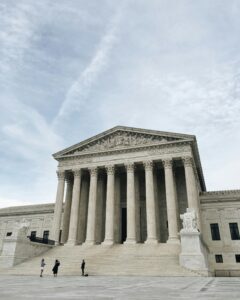On July 17, 2014, the Federal Communications Commission (“FCC”) released its much anticipated Software Defined Radio Application Guide (the “Guide”). Since 2005, as software defined radios (“SDRs”) began to increase in popularity, the FCC has only provided partial guidance on the SDR approval process. However, with the release of the Guide, radio manufacturers now have a clearer protocol to follow in seeking and receiving approval to market SDRs within the United States.
SDR Defined
In its March 2005 release entitled Matter of Facilitating Opportunities for Flexible, Efficient, and Reliable Spectrum Use Employing Cognitive Radio Technology, the FCC defined an SDR as “[a] radio that includes a transmitter in which the operating parameters of frequency range, modulation type or maximum output power (either radiated or conducted), or the circumstances under which the transmitter operates in accordance with Commission rules, can be altered by making a change in software without making any changes to hardware components that affect the radio frequency emissions.” In the Guide, the FCC makes clear that if “third parties not permitted by the [FCC] through specific filings [can] modify, configure, or load different software, or make configuration settings to operate the device or host hardware radio frequency parameters (frequency range, modulation type, maximum output power or other radio parameters) in any other way than granted,” then the device qualifies as an SDR and must be certified by the FCC before it can be marketed for sale in the United States.
The Guide
The Guide specifies that for any SDR to be approved by the FCC, “the responsible party must demonstrate and maintain an acceptable software security process that ensures full compliance to the FCC certification when marketed, sold, operated or updated in the U.S.” The Guide provides a list of: 1) documentation that those seeking certification must provide to the FCC; and 2) questions that must be answered prior to review and approval.
In addition, the Guide allows independent Telecommunications Certification Bodies (“TCBs”) to certify SDRs through a “Permit-but-ask” (“PBA”) procedure. TCBs are required to collect and review all necessary records. Upon review of a manufacturer’s “folder,” the TCBs then submit the application to the FCC for review. This process permits manufacturers to have the SDR application reviewed prior to submission to the FCC. In effect, manufacturers have an opportunity to iron out any kinks before the FCC reviews its SDR application.
Impact of the Guide
The FCC has stated that the Guide “is not intended to be exhaustive and may be modified in the future.” As SDRs develop and improve, we expect that the FCC will revise the Guide and implement further measures to ensure that SDRs comply with already established FCC rules. Because this is a nuanced and rapidly changing regulatory landscape, manufacturers and software developers should retain experienced counsel prior to bringing any SDR to market.
If you are interested in learning more about this topic or pursuing FCC certification for SDRs, please e-mail us at info@kleinmoynihan.com or call us at (212) 246-0900.
The material contained herein is provided for informational purposes only and is not legal advice, nor is it a substitute for obtaining legal advice from an attorney. Each situation is unique, and you should not act or rely on any information contained herein without seeking the advice of an experienced attorney.
Attorney Advertising



